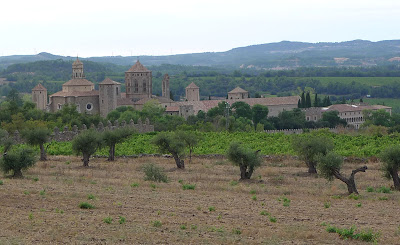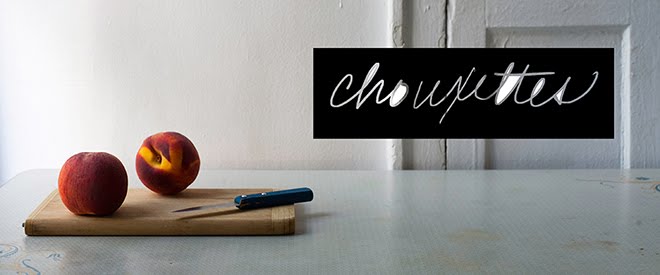
Dear Devon,
Two weeks ago, I left the temperate Mediterranean climate of Barcelona for skyscraper city New York. The decision to leave was based in reason, but as is often the case, emotions and reason don't always align. The adjustment has been smooth but not without frequent thoughts of Barcelona or of my friends lucky enough to call Barcelona home. So, while I try to launch myself back into New York life, my archive of photographs reminds me of that fantastic year in Barcelona.
Since returning, I have spent many afternoons trying to organize the room: wedging books into shelves and jamming clothes under the bed. Sorting through my digital folders, I found this post from last autumn that I never put up. It is amazing how much changes in a year. Wild mushrooms are still a priority but perhaps not as important as securing that elusive full-time job or a perfect apartment...

(From October 2010)
While all of Catalonia is in the throes of wild mushroom season, I am enjoying the dwindling supply of this autumn’s artichoke harvest. Though noticeably smaller than when I first arrived, they continue to pop up in Barcelona markets, and I am taking full advantage. Unlike their giant globe counterparts in the US, these chokes boast delicate, tightly packed leaves, and are unmarred by long overland transports. One of the tastiest parts is the stem, which extends four or five inches from the base and still supports long curling leaves. But what I love best is the absence of sharp prickles. These artichokes are defenseless. I’m going to attack with full force!
Given their abundance in local markets, James Beard’s baked stuffed artichokes was the inspiration I needed. Artichokes can seem intimidating, unapproachable, and even diabolical, but bolstered by Beard’s energetic and witty prose, any home chef can easily prepare an elegant serving of artichoke for a first course or a light luncheon.

I can count on one hand the number of times that I have prepared artichokes that didn’t come out of a jar. I love their distinct tang and buttery richness, but my last encounter with this prickly tuber left me searching for dragon skin gloves and a samurai sharp knife. And so it was with a bit of lingering doubt that I purchased four small, tightly packed buds in my local market. Unhampered by stinging needles, preparation was significantly easier than I had imagined. A whole artichoke fit snugly in my hand, allowing for greater dexterity and speed. Soon my cooking pot was bubbling away with freshly shorn chokes.
With the upper leaves removed and the fuzzy choke hollowed out, an artichoke makes a neat container. Beard provides several possible fillings, including crabmeat salad, cubed avocado, duck with mayonnaise, sweetbreads in cream, and chicken hash– but my eye fell on a hearty French-Italian inspired filling of mushroom, sausage, and herbs.
It would have been easy to make this a purely Spanish dish, stuffed with wild Catalonian mushrooms and bits of jamón. But I opted for a closer interpretation of the recipe. I doubt Beard would have minded, either way. He was a big supporter of local ingredients, and anyone who loves food like he did could hardly have objected to the addition of some bright orange
rovellons. In the end, white button mushrooms worked just as nicely, but I did manage to sneak in a bit of Spain in the form of
fuet, a salty, porky, cured Catalonian sausage. A few slices go a long way, so I limited myself to 2 tbsp of diced
fuet.

Often it is the artichoke hearts that get all the attention, but at least with these, the stem has great flavor too. As breadcrumbs were in short supply, I resisted trimming the stem to a short knob. I cooked the artichoke, stem and all. Then I diced the cooked stems and folded them into the prepared stuffing. I worried that without this extra bit of flavor, the distinct taste of artichoke would get lost in the rich meaty stuffing. This is about artichokes.
I served these fresh from the oven as a first course. This kind of dish is best eaten among close friends: Roll up your sleeves, put your elbows on the table, and by all means, use your teeth! The leaves were easy to separate from the core, surrendering the soft flesh buried under the savory blanket of stuffing. The juice dribbling down my arm meant I had lost that battle of decorum, but shouldn’t enjoyment take precedence in these circumstances?
PS. Beard says they’re good cold, too– and he is right again. The leftovers made a tasty lunch the next day.
Stuffed Artichokes
adapted from James Beard
American Cookery(makes 4)
4 small artichokes, trimmed and cleaned
lemon, halved
1 clove garlic, crushed
¼ cup mushrooms, chopped
¼ cup leek, chopped
¼ cup parmesan cheese, grated
¼ cup cured sausage, chopped
¼ cup breadcrumbs
2 tbsp butter
½ cup white wine
salt and pepper
To prepare artichokes, trim off the woody, dried bit at the end of the stem. Using a paring knife, strip the first layers of fibrous skin from the tip of the stem to the base of the artichoke. Remove a few layers of the outer leaves. With a heavy duty, sharp knife, remove the tips of the artichokes. Trim any remaining leaves that may have sharp prickles. Place the entire artichoke in a pot of water with a few wedges of lemon. Continue with remaining artichokes. Bring the pot of water to a boil and cover. Simmer for 30 to 40 minutes, until the leaves are tender and pull away from the center when lightly tugged. Remove from the hot water and allow to cool, about 20 minutes.
In a sauté pan, melt butter and add leeks, garlic, mushroom, and cured sausage. Cook over medium heat to lightly brown. When mixture is nicely browned, add breadcrumbs, a pinch of salt and a few grinds of pepper. Gently toast breadcrumbs and allow crumbs to soak up all the delicious fat from the sausage and melted butter. Remove mixture from the pan and allow to cool in a medium sized mixing bowl. Add parmesan cheese and mix well.
Remove the stems and scoop out the center leaves to create a small bowl. Finely dice stems and removed central leaves. Add to the parmesan-mushroom mix.
Preheat oven to 375 degrees F. Gingerly separate the leaves, be careful not to detach the leaves from the central choke. Scoop filling into the central cavity and tuck into the gently opened leaves. I find it is easiest to hold each artichoke in the palm of my left hand and use my forefinger and thumb to fill the chokes and leaves. Place each stuffed artichoke into an ovenproof casserole dish. Add liquid (white wine or broth) and place in the oven for 30 minutes, basting twice with the pan juices. The artichokes are done when the tops are nicely golden brown, moist, and tender.

 Dear Devon,
Dear Devon,
 A few weekends before my departure from Europe, I was fortunate enough to be a guest at a friends’ country home in the Montsant region of Catalonia. The dark green shrubbery and rocky terrain reminded me of the twisty mountainous stretch that winds down to Half Moon Bay in California. The soil, rich in slate, supports a broad spectrum of agriculture from hazelnuts and almonds to peaches and olives. But, the area is probably most famous for its almost endless rows of vines, heavy with clusters of grapes when I arrived in late September.
A few weekends before my departure from Europe, I was fortunate enough to be a guest at a friends’ country home in the Montsant region of Catalonia. The dark green shrubbery and rocky terrain reminded me of the twisty mountainous stretch that winds down to Half Moon Bay in California. The soil, rich in slate, supports a broad spectrum of agriculture from hazelnuts and almonds to peaches and olives. But, the area is probably most famous for its almost endless rows of vines, heavy with clusters of grapes when I arrived in late September.
 I have a weakness for small town celebrations. The allure of the annual wine festival was irresistible. Sporting the light tan of a city dweller, I popped out into the unrelenting sun of the country and threw myself into the boozy mix of red wine and heat.
I have a weakness for small town celebrations. The allure of the annual wine festival was irresistible. Sporting the light tan of a city dweller, I popped out into the unrelenting sun of the country and threw myself into the boozy mix of red wine and heat.
 The rest of the weekend was spent in relative tranquility. In the morning, we enjoyed a filling breakfast of hot chocolate and pastry before heading out to the family vegetable garden. Soon, baskets loaded with freshly harvested beans, tomatoes, beets, lettuces, carrots and squash found their way into the trunk of the car. I wandered off to gather blackberries which grew in a tangle of thorns and thin branches along the banks of the creek.
The rest of the weekend was spent in relative tranquility. In the morning, we enjoyed a filling breakfast of hot chocolate and pastry before heading out to the family vegetable garden. Soon, baskets loaded with freshly harvested beans, tomatoes, beets, lettuces, carrots and squash found their way into the trunk of the car. I wandered off to gather blackberries which grew in a tangle of thorns and thin branches along the banks of the creek. My visit ended with the weekly Sunday lunch at a friend’s mother’s table. She had prepared a spectacular assortment of finger foods followed by three courses of rustic country home cooking with vegetables grown in her garden and meat hunted by her husband.
My visit ended with the weekly Sunday lunch at a friend’s mother’s table. She had prepared a spectacular assortment of finger foods followed by three courses of rustic country home cooking with vegetables grown in her garden and meat hunted by her husband.













































